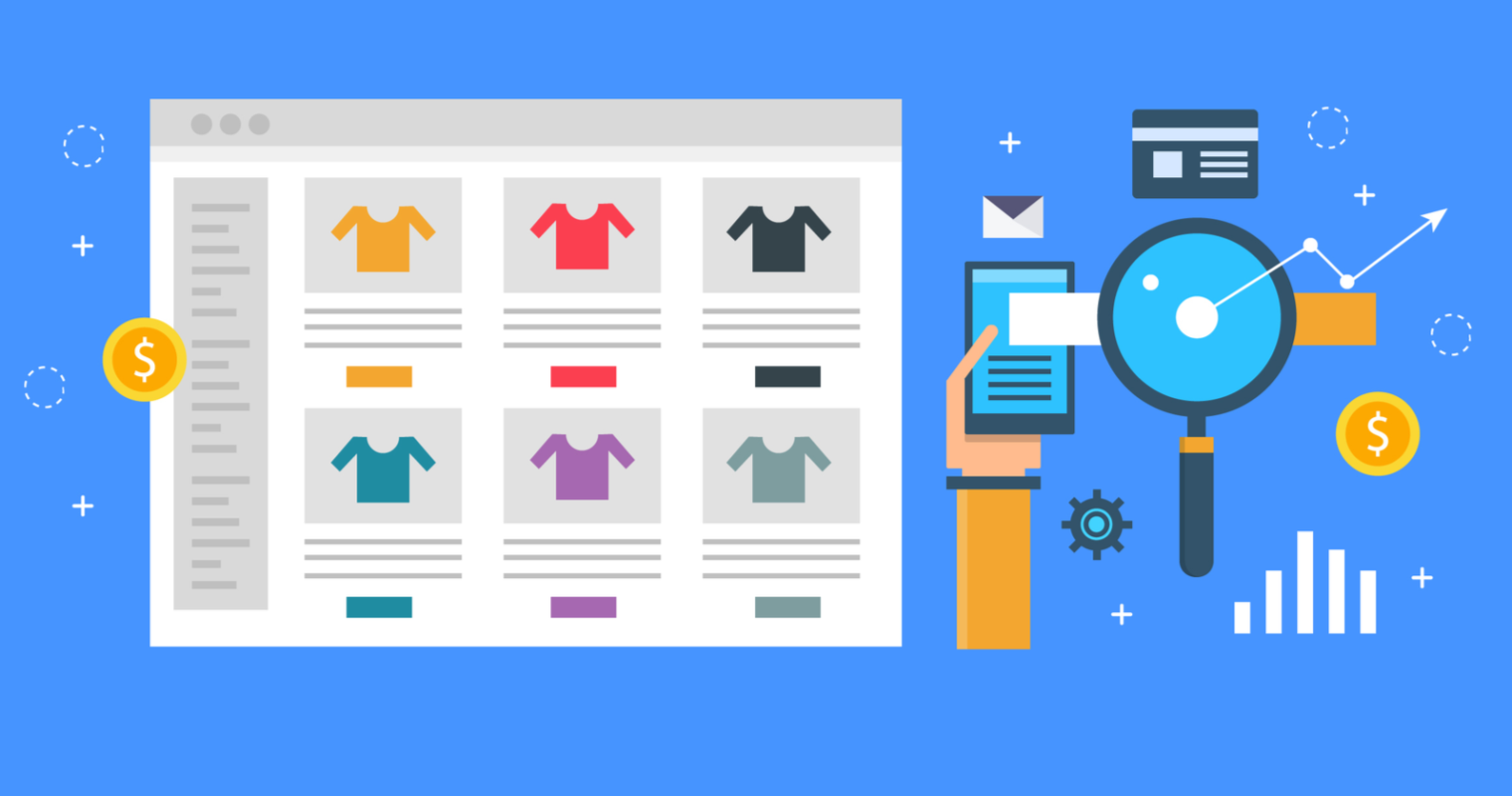Key Points to Consider When Categorizing Products in Your E-Commerce Store

If the pandemic has shown us anything, it's that having an internet presence is essential for every business. Online sales increased by 34% in 2020, and they are currently increasing by 39% in the first quarter of 2021. When it comes to e-commerce, there's a lot to consider: website design, marketing, what to do if your website goes down, and customer management on a digital platform, to name a few.
Related
Why You Should Start eCommerce For Your Business
Simple eCommerce Tips to Improve Sales
Make Your Ecommerce Product Page Like No Other
Advantages of Turning to Online Retail Store
How Can Auto-fulfillment Help Your Business Become More Efficient?
We're going to focus on just one topic in this article: online product organization.
This may be something you haven't considered, but if you have a wide product line, you should think about how to make your clients' online buying experience as fluid and straightforward as possible. After all, 94 percent of customers say that a user-friendly website is essential, and you don't want to lose a valuable customer because they got lost or confused when looking for their chosen goods. Rather, develop an intuitive path across your business, complete with exact categorization and a well-labeled menu.
Research how your customers choose to shop.
Understanding how a physical store is laid out can be a great place to start when it comes to structuring your online store. Imagine a supermarket where fruits are placed next to vegetables and other comparable products, or a clothes store where all of the shoes are exhibited together while jeans have their own department.
However, these assumptions should be used with caution. Customers' online behavior can be extremely different from their offline behavior, where bright colors and fascinating shelves have a better tendency to attract someone's eye.
Researching your unique users is a better and safer option. To answer this question, you can look at your site stats, but you might also want to conduct some user testing. You might begin by assuming that consumers buy furniture based on rooms rather than styles or specific items, only to discover that user testing contradicts this notion. Similarly, you might try organizing coffee beans by flavor before discovering that your visitors prefer to search by bean origin.
Whatever option you choose, keep an eye on your site's performance and any dead ends that may cause you to lose consumers.
Decide on the first, second, third level of categories.
The most significant categories on your e-commerce website will be the first-level categories. These will be the top-level links that you display on your home page or carousel, and they should be the most sensible overall grouping of your products on a fundamental level. Clothing, for example, is likely to be organized by gender and age, with “women,” “men,” and “children” being the top-level categories. Alternatively, you can like to use the terms "casual clothing," "sportswear," "formal wear," "underwear," and "accessories." At this level, the category name must be simple and self-evident.
Second-level categories, sometimes known as subcategories, are similar to the shelves in a grocery aisle. For example, you might have put all of the kitchen furniture in the e-commerce top-level category, and now you have "chairs," "tables," "cupboards," and so on in the subcategory.
As you differentiate product kinds by their features, the third level becomes increasingly specific. For example, you might have a category called "lounge" with a subclass called "couch," then "2-seater," "3-seater," and so on.
While you may want to add more tiers, keep in mind that the more clicks between the client and the buy button, the more likely the buyer is to abandon your site. You should aim for two to three category levels, but no more than five.
Allocate products in the appropriate category.
It's time to look through your inventory and assign items to the proper categories. In your inventory system, a product should only belong to one category so that you can be consistent in your purchasing, stock counting, and other activities. Your e-commerce website, on the other hand, can be distinct from your back office, and you can assign a product to as many categories as you choose. When creating these categories, keep in mind the purchasing experience.
Identify the generic attributes and values of your products.
Your products will have distinct characteristics and values. Product qualities or dimensions can be used as filters to limit down a list of possibilities. Brand, size, color, and so on are examples of attributes. Once they've located the product category they're looking for, an attribute is something they'll look for. This is the category you browse in if you're looking for women's jeans, for example. Once in the women's jeans section, the customer would sort by brand and size.
After then, each attribute will require a set of values. For example, the size would be 8, 10, 12, 14, and the colors would be blue, red, green, and so on.
Identify the specific attributes and values of your products.
After you've determined which general attributes and values would be beneficial for further filtering possibilities, you'll need to decide which specific attributes and values will only work for specific objects. A couch's dimensions, for example, would be a specific characteristic. These unique properties should be presented clearly at the beginning of the listing, even if they cannot be used as part of your navigation. Make sure you standardize the way you format things so that it's easy for the user to find crucial information.
Remember to consider the characteristics and values that your customers will require to make a purchasing decision. You don't want the consumer to go looking for important information or rely on the chance that they'll ask you a question. The goal of your classification is to make the transition from entry to the shopping cart as seamless as possible.
Continue to fine-tune your categories.
You must maintain an eye on your website's analytics - looking at the routes different categories of buyers take through your store – no matter how much work you put into your original design since clients will respond in ways you did not foresee. For example, depending on how your visitors search and use your website, a pair of shoes you may deem to be simply "lace-up boots" may be better called "hiking boots" or "biker boots." Of course, the boots are lace-up boots, but taking the effort to understand how your consumers work and fine-tuning these categories based on that knowledge will pay off in the long term.
The greatest strategy to increase conversion rates is to keep learning about the performance of your site. While products should only be assigned to one category on the backend, you can assign them to many categories on the frontend. You can create a "Sales" grouping if you need to get rid of some items. Being creative in how you bring things to your clients' attention is a combination of art and science that takes time to master.
Remember that creating an e-commerce store is a process. Changes will be informed by your consumers, and you will make better selections as time goes on. These suggestions should assist you in taking the best steps forward and resolving the most serious teething issues you may encounter.
Related Posts
Wed, Apr 22, 2020 11:34 PM
Find Verizon Internet for Business Near You!
Verizon provides Internet for business in more than 40 states in the US, speeds are limited to 15 Mbps, and many businesses will need more juice. If you're in the Northeast, you can enjoy high-speed Internet via Verizon's FiOS. This is ideal for businesses that need high speeds, such as restaurants, hotels, medical facilities, hospitals, schools, and other businesses.
Thu, Apr 23, 2020 12:00 AM
5 Best Small Business Internet Service Providers (2021)
The following Internet Service Providers are not listed in any particular order, but we have ranked these five companies as worthwhile due to some key factors such as speed, reliability, cost, and overall customer satisfaction.
Mon, Apr 20, 2020 11:13 PM
Business Internet Guides for Entrepreneurs
Small businesses need to grow, but how big should your business become before you buy it online? Whether you started out as a sideshow or a brick-and-mortar business, successful small businesses are finding it increasingly difficult to decide when to shell out money for an Internet business.
Thu, Apr 23, 2020 11:52 PM
Why Business Internet is More Expensive Than Residential Internet
This question is asked so often today that it seems worth explaining, but here are 5 reasons why business Internet is more expensive than Residential Internet packages.
Fri, Apr 24, 2020 5:17 AM
Comcast Internet For Business: Internet, Phone, TV, and Other Solutions for your Business.
Comcast Business is US largest cable provider for small and medium-sized businesses and has become a force in the market, recognized by leading industry over the past two years as one of the fastest-growing providers of high-speed broadband to business customers




